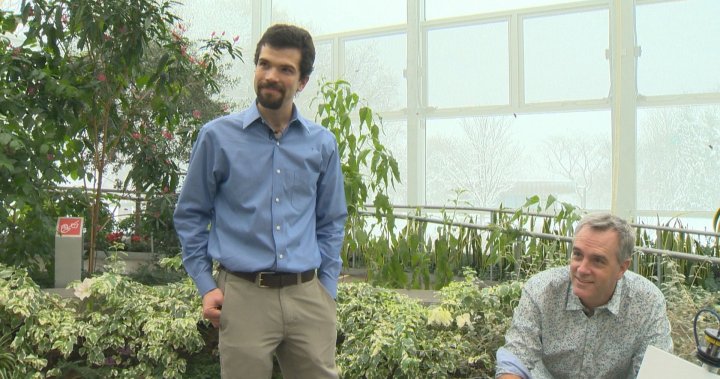Seen in sci-fi movies, artificial intelligence (AI) has often been villainized.
But scientists in Montreal are harnessing the technology for good, enabling entomologists to discover new species and better understand the effects of climate change.
The project’s seed was planted in Montreal’s Insectarium where there are more than 3,000 insects and some 1,500 free-flying butterflies. It’s not exactly easy to know all the critters by name.
That’s why the Insectarium’s director, Maxim Larrivée, partnered up with David Rolnick’s artificial intelligence research team to develop an app.
You take a photo and the app’s software tells you what the insect is.
The app’s success got the duo thinking.
“We went, ‘Wait a minute, maybe we could actually monitor in real time the diversity of moths in nature by taking photographs,’” said Larrivée.
This is where AMI comes in. “The AMI system, for ‘Automated Monitoring of Insects,’” Larrivée said.
AMI is a motion-activated machine equipped with a camera and a small computer. When a moth lands on it, it takes a picture and then it’s able to recognize what type it is.
“There’s a tiny computer here which stores the images that the camera takes and then you can process those photos using an AI algorithm,” said Rolnick, an assistant professor of computer science at Canada CIFAR AI Chair at McGill University and Mila – Quebec, an AI research institute in Montreal.
Get the latest National news.
Sent to your email, every day.
Rolnick’s team developed the algorithm in Montreal.
“We had a lot of talks with Max and other entomologists about how to build tools that were actually helping conservation and climate action,” said Rolnick.
“My lab specifically focuses on innovations in AI driven by problems in climate change,” Rolnick said.
The machine itself was made by another team in Europe. It’s solar-powered and made to resist temperatures of up to 100 C.
“So you can put it out for months at a time and get lots of information, which we then pull out, and download and process together,” Rolnick explained.
Rolnick is now working on taking it to the next level, training algorithms to identify species that are currently not in the database.
“And accelerate our documentation of all this we call ‘dark diversity’, all this unknown information that we have in the tropics,” Larrivée explained.
AMIs have been deployed across the world: six countries in three continents.
“And it’s just growing bigger. We are adding to our list of deployments every few weeks. And the system is designed to be as scalable as possible. We’ve built it, so we don’t need a lot of additional work to set it up for a new place,” Rolnick said.
Most recently, the team visited Panama’s rainforest, AMI in tow, where they found 1,500 different species of moths.
“A quarter of all the moths that were attracted to the machine were actually unknown to science. So for us that was simply astounding,” said Larrivée.
Astounding and significant, as moths represent a 10th of all species in the world. Half of them are estimated to be undiscovered.
Because of climate change, pollution and habitat destruction, many moths species die off without us even knowing of their existence.
“A colleague described this as burning the library before reading the books,” Rolnick said.
But by bringing moths to the flame of research, there is hope that there will be new pages of data written, which can help us understand the impact of climate change and even inform policy.
The discoveries are open source, which means they are out in the world for anyone to consult.
“Just like a birdwatcher uses binoculars, we could see an entomologist in the future using an AI tool to help them have more impact, to help them understand insects better,” Rolnick said.
© 2023 Global News, a division of Corus Entertainment Inc.


